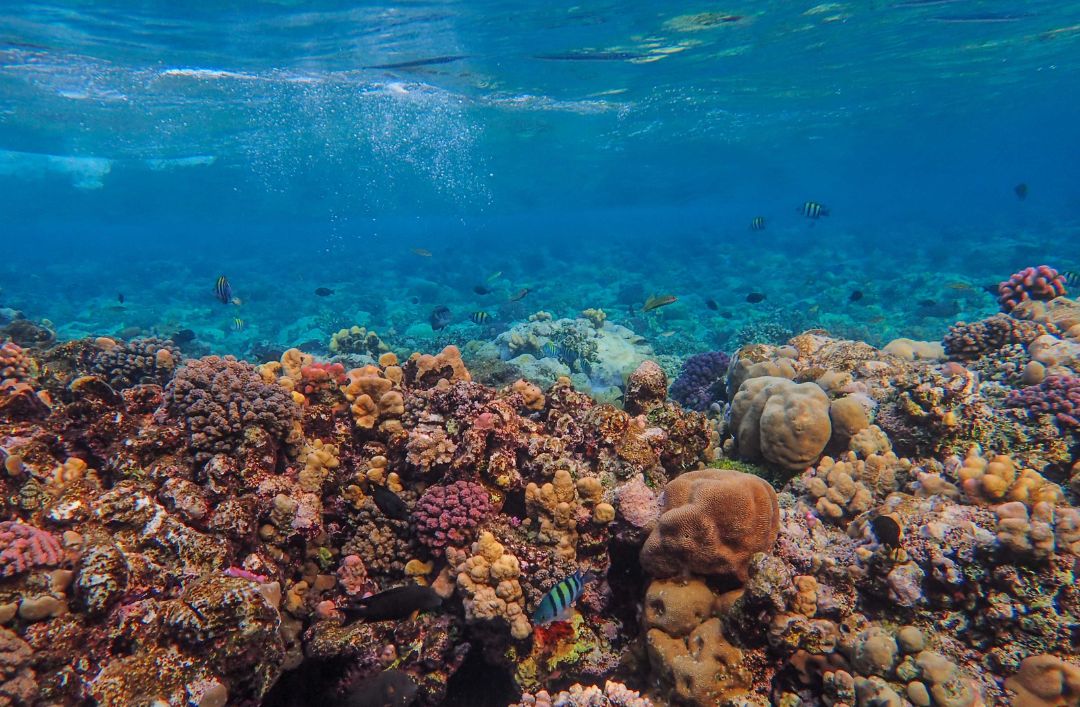
Jan 30, 2023 | Activities/Services, Other towns
Water comprises almost three quarters of the Earth. Water flows through different places, rivers, lakes, glaciers, seas, and oceans. Most of it in these last two bodies of water, and of those, we only know about 5% of their depths which harbour treasures in the deep just waiting to be discovered.
The Costa Blanca Norte is an unmissable destination for fans of scuba diving. The main reason is the beauty of the marine depths that are host to an enormous wealth of flora and fauna which will delight anyone seeking to explore the sea bed. Throughout this area you will find different routes for diving and there are several schools where you learn about this sport, such as La Galera or Dive & Dive. In this blog post we tell you about some really special ones.
Starting out at La Granadella
For real beginners, or those without much experience who want to get involved in this world, our first recommendation would be to follow one of the underwater routes that you can find at La Granadella beach. It is well known for the beauty of its sea bed and admired by all divers. In fact, the route closest to the beach, from where it can be accessed directly, is an easy one with a maximum depth of around 10 metres.
El Vaporet
A few miles from the port of Denia, you can find “El Vaporet”, a former cargo vessel that sank in the late 19th century. If you dive there you will see several species that shelter in the wreck, as there are no rock formations in the vicinity, and you can find conger eel, lobster, spiny lobster, along with white seabream, gilt head bream and grouper. They are, however, found at a considerable depth, and given the currents there, and possibly reduced visibility, it is advisable to undertake this particular route only when conditions are excellent, and if you are a really experienced diver.
El Freskito
You´ll find this place on the beach of las Rotas de Denia, some 4 km from the port. In the swimming pool created by natural rock and transparent sea water, this easy and beautiful route begins. It’s a good idea to explore the craggy rocks that make up the pool walls as there you may see octopus, European fan worm, spoon worm and perhaps a Moray eel.
Cap de Sant Antoni: La Cullerà and Primera Ensenada
The first of these caves can be found at the foot of the cliffs of the Marine Reserve of Cap de Sant Antoni. If you want to dive in this cave, which penetrates up to 50 metres into the mountain, it is necessary to get permission from the Board of the Environment to explore it. Armed with this permit, you can explore the cave which is at a depth of 9 metres where you will find slipper lobster, meagre, and a conger eel here and there. Not to mention octopus, sea bream, grouper and plenty of meagre hiding in the myriad nooks and crannies in the rocks.

Another excellent route in this area is Primera Ensenada, which is just before you reach the lighthouse. This area is protected (you will need authorisation to enter) and lies at a depth of 16 metres where the sea bed is shaped by the large rocks scattered here and there in the sand, and it offers an exceptionally beautiful and lively environment, perfect for seeking out species that are difficult to spot in other places.
The area around the Cap de Sant Antoni lighthouse is also a place where you can contemplate the beauty of the Costa Blanca marine depths. Here the enormous rocks on the seabed are particularly striking, as they create passageways and a play of shadow and light, providing a spectacle that will charm underwater photographers. Throughout the route you will see the white gorgonian coral, and depending on how close to the rock wall you venture, you can dive down from 12 to 19 metres, a depth at which you can spot an even greater variety of interesting species of flora and fauna.
Doesn’t it make you want to get into your wetsuit? Whether you live close to Cumbre del Sol or you simply came upon this artícle when you were looking for things to do on the Costa Blanca Norte, we would encourage you to enter this marvellous world and discover the best waters that the Mediterranean sea has to offer.
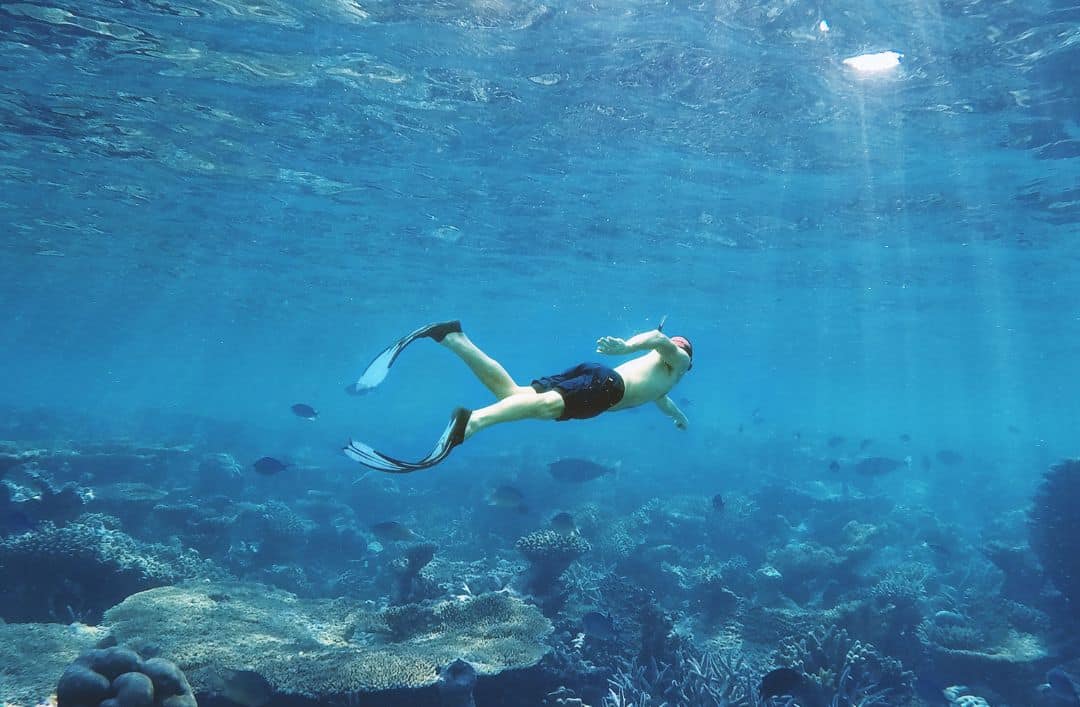
Aug 23, 2022 | Activities/Services, Cumbre del Sol
The Costa Blanca boasts over 200 km of coastline with 170 beaches, many of them with an EU blue flag. Given these dimensions, the area is considered to be one of the best and most fun coastlines in Spain for divers.
The Costa Blanca, and particularly its northern end, is home to some of the most delightful sandy coves and beaches in the Spanish Levante. With water temperatures averaging 20ºC in summer and 14ºC in winter, snorkelling, diving or any other water sport is practically a requirement here. However, 170 beaches are a lot of beaches, and so, would it help if we told you about some of the best ones?
A classic: La Granadella
Considered to be one of the finest beaches in Spain, Granadella is a magical spot where the sea and the mountains merge to perfection. Thanks to the peaceful waters and the seabed of gleaming white sand, diving here is a unique experience and ideal for watching marine life.
If you want more, there is another possibility for diving in Jávea in Portixol, known as the most “instagrammable” beach on the Costa Blanca. What makes it so special? Probably the fact that it forms a bay surrounded by high cliffs.
Diving at the foot of the Peñón de Ifach?
Yes it is possible. We are talking about El Racó, a pebbly little cove with crystal clear waters brimming with sea creatures of every kind, with a perfectly signposted underwater route, and so it is ideal for diving and snorkelling fans.
Los Arcos Cave: emblem of the Costa Blanca
El Poble Nou de Benitachell has one of the best beaches for diving namely, Cala Moraig. This cove harbours some of nature’s wonders among its rocks. Not only that, what makes this place really special is the los Arcos Cave. One of nature’s most stunning spectacles, it has been produced by the sea eroding the rocks over the years to form a cave with natural stone pillars. It is very popular with snorkellers and it is relatively easy to reach. Other interesting routes for diving in Benitachell can be found in Cala Llebeig and Cala Testos, and for more information about these beaches check out this link.
For those seeking something completely different, there’s nothing better than spending a few days at the impressive DreamSea Mediterranean Camp, at Cala Moraig, which has attained almost cult status with Mediterranean lovers, for its amazing glamping experience. Nature + Sea + Activities, what more could you ask?
Close to Benitachell, in the municipal district of Benissa, you’ll find cala Pinets. This sheltered yet rather wild little cove has a pebbly shore. It is ideal for switching off while you snorkel or just decide to spend some time communing with the sea.
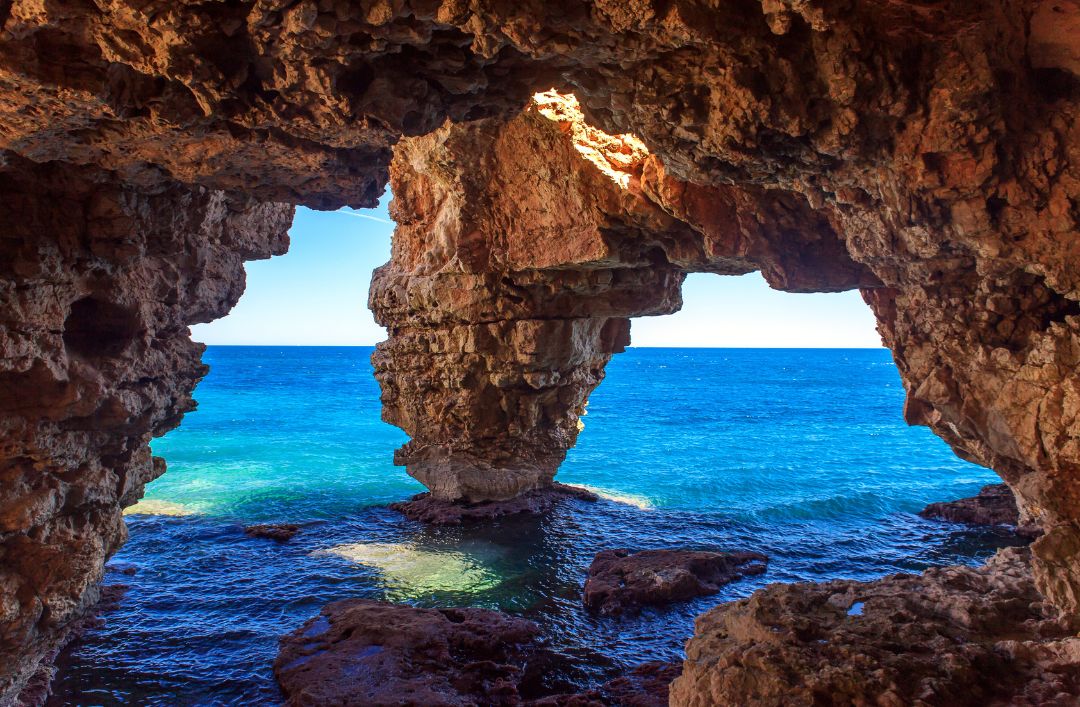
And there’s more! Altea, Dénia…
As we mentioned at the start of this blog, with over 200 kilometres of coastline there are many (but never too many) beaches. Not all of these are found close by villages and little known spots. In popular towns like Altea you can also find some interesting possibilities for having a good time such as Mascarat beach. Furthermore, in Dénia you will find the clearest most transparent waters of the Costa Blanca at El Fresquito beach, which may not be the best known, but this is precisely where its charm lies.
Now perhaps you have a better idea of how many beaches, coves and caves there are of every kind and for every taste. Make the most of them because there is still a month of summer left and you can enjoy every single one, and then tell us which is your favourite! Don’t miss out on our coming artícles about other activities and things to do on the Costa Blanca Norte.
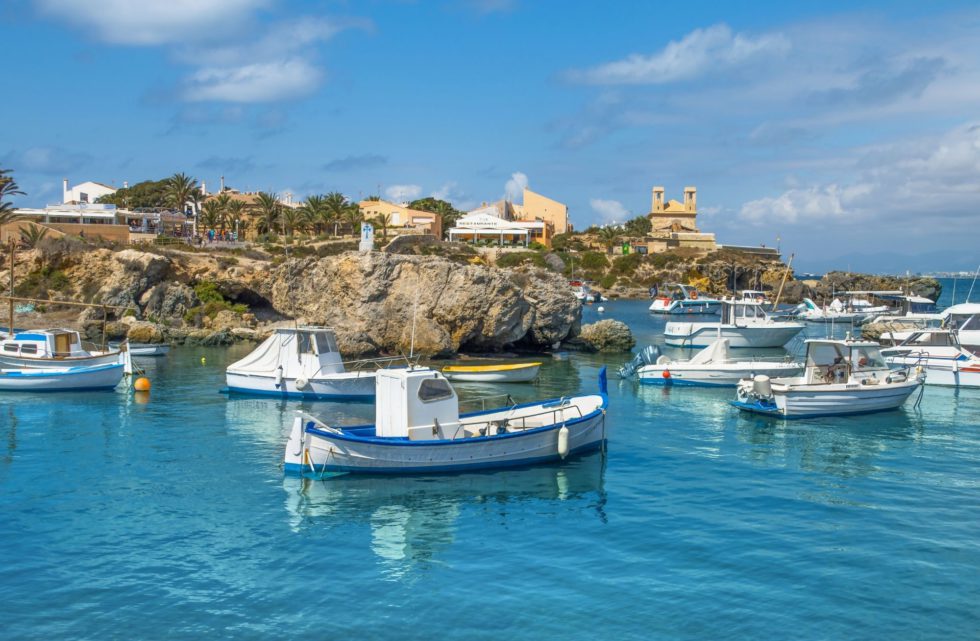
Dec 13, 2021 | Activities/Services
Is there a way where you can explore virgin coves, discover myth and history and at the same time learn about the region’s flora and fauna? Visiting the islands of Alicante allows you to do all this in one go. These islands are a treasure chest full of surprises. In this article, we’ll tell you about four islands in Costa Blanca.
Isla de Tabarca
Tabarca island is the only island on this list with a local population. The easiest way to get there is from the Santa Pola Port on a catamaran. Arriving at the port, you’ll discover beautiful crystal clear waters that are so inviting you’ll want to take a dip. In this marine reserve, you can swim and dive, watching the fish in their natural habitat. A day of snorkelling and laying on the beach is a day sure to awaken your appetite, but don’t worry because on this island you can go to one of its restaurants and enjoy a delicious rice dish.
Isla de Benidorm
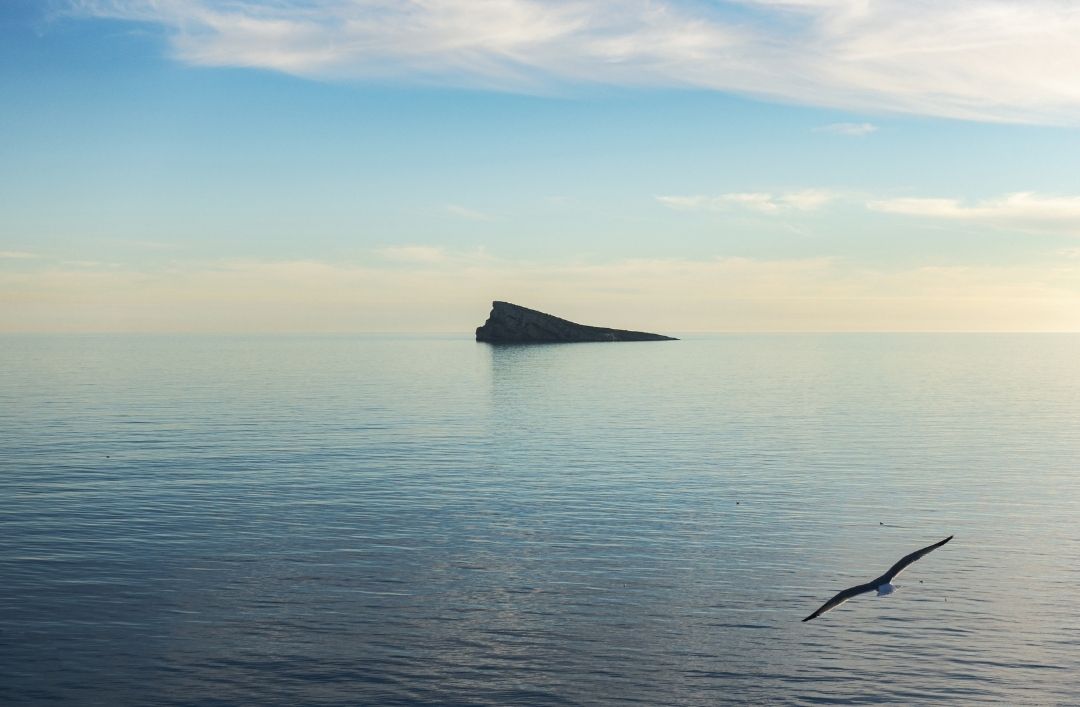
The island of Benidorm does have a local population, but of a different kind – sea birds land here to fish and to rest. If you love bird watching, on this rock you’ll be able to see all types of species from peregrine falcons, pallid swifts and the Sardinian warbler, amongst many other species.
But the surprises about this island don’t stop there. There are many different legends and fables about how this triangular hunk of rock came to be in the sea. One story goes that the giant, Roldan, carved a piece of rock out of the Puig Campana mountain so that the last rays of light could pass through and shine on his lover for longer, who was cursed to die after sundown. That is why the island of Benidorm is also known as Roldan’s rock. This island Is the best place to be for those who want to have some fantastic views of the Benidorm skyline.
Would you like to visit? You can easily access the island from the port of Benidorm and the Rincón de Loix. Boats leave every hour starting from 10am.
Isla de Portitxol
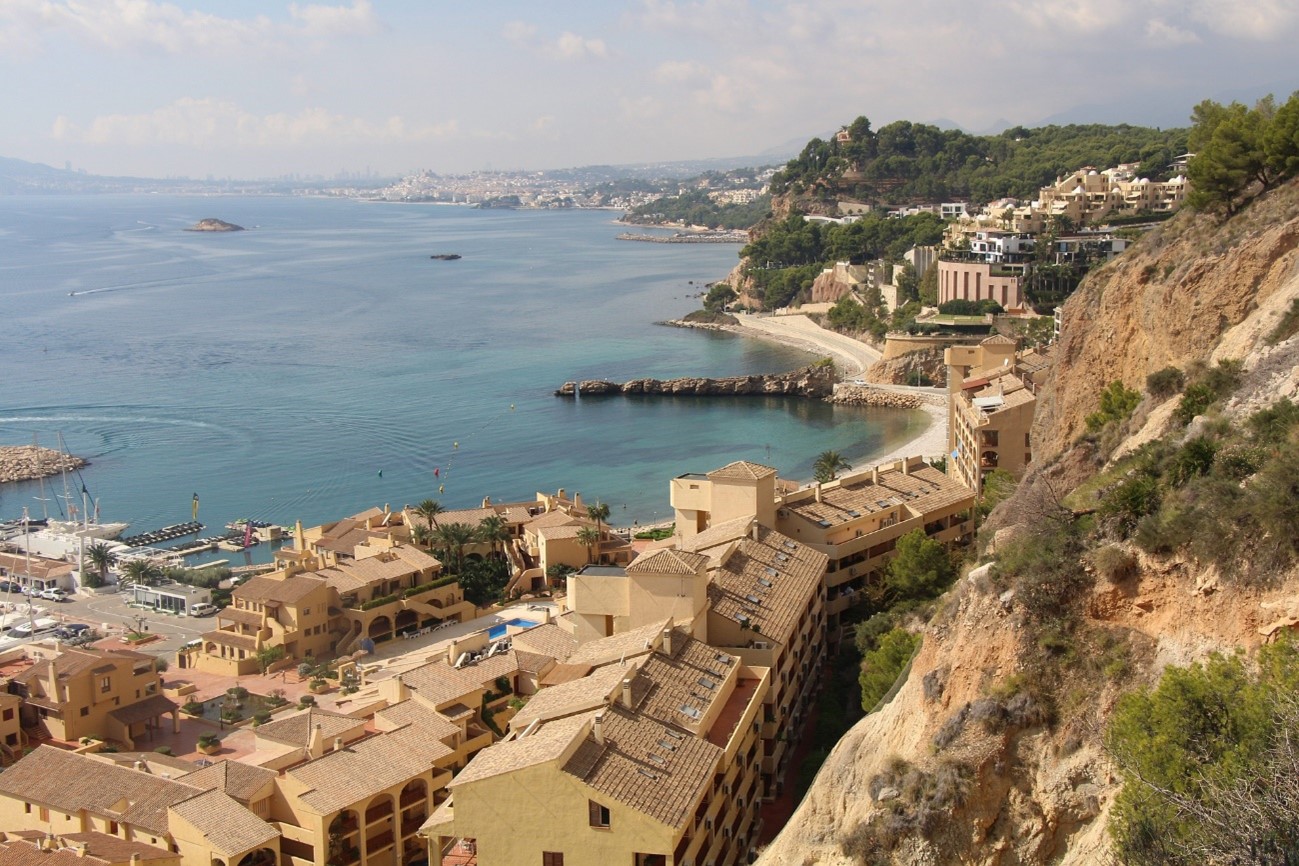
The island of Portitxol is just in front of the famous Barraca beach in Jávea. On this island, you’ll be able to find archaeological remains from when the romans used it as a port. Here’s a fun plan: go on a small hike around the island trying to find foundations of roman columns, Phoenician ceramics and marble pavements. Don’t let its size fool you! This small island hides great treasures waiting to be found.
Isla del Descubridor
The name of this island (Explorer’s Island, in English), according to popular belief, is said to be named after a local sailor that was part of Christopher Columbus’s crew. Whether it’s true or not, what is sure is that this island is the perfect place for those who love scuba diving. This is your chance to swim with the animals that inhabit the sea floor that’s full of surprises! From a wall that’s full of anemones and colourful sponges to a small cave called the “Dolphin’s cave”. In it, you’ll the remains of a dolphin resting in the water there. And the best yet is that it’s all close to Cumbre del Sol.
If you go on a day trip to one of these islands, here’s some advice. I f you want to make the most out of what these islands have to offer, it’s best to go in autumn and winter. And don’t be afraid of the weather, the climate in Costa Blanca is pleasant all year round! So, you can visit these islands peacefully and enjoy the natural world away from the throngs of people. Our recommendation is to prepare a picnic to take with you so you can spend the whole day exploring the island you choose.
Sounds interesting, doesn’t it? If you want more recommendations for what to do in Costa Blanca, keep up to date with our blog and don’t miss out!
Feb 17, 2014 | Benitachell
-

View of Benitachell
Today we would like to share with you the The Benitachell Guide that we have found on the Costa Blanca website.
Here you can find a link where you can check the Benitachell guide in Spanish, French, English and German language so you can learn a bit more about the heritage, tourist attractions, dining options, hiking trails, diving, events, interest phone numbers and more information about the coastal town of Benitachell. (more…)
(more…)
May 30, 2013 | Events, Other towns

Jávea’s Port
From 31 May to 2 June will be held in Jávea the 2nd “Festival del Mar” (Sea Festival) around different spots in the port area like Admiral Bastarreche Sq., Jaume I Ave and Club Nautico de Javea (yacht Club).
The main event of this festival will be a boat and nautical equipment tradeshow, which will also feature a preowned equipment sell. Also there will be several sport competitions and numerous leisure and festive activities aimed at families, sailing demonstrations, boat rental, water sports, fishing workshops for children, seafood cuisine stalls, concerts, fashion shows and photo exhibitions among other activities. (more…)










